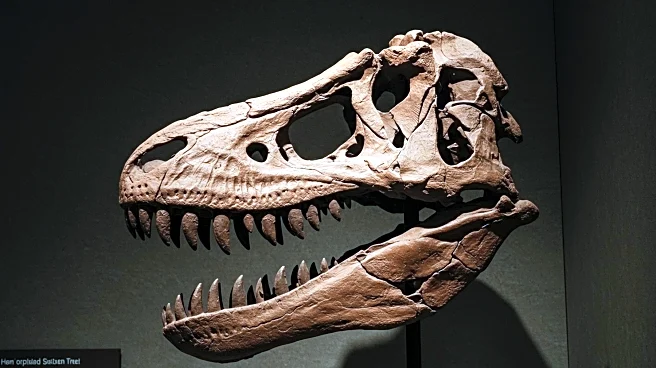What's Happening?
A physicist and research team have discovered preserved blood vessels in a Tyrannosaurus rex fossil, known as Scotty, the largest T. rex ever unearthed. The discovery was made using advanced 3D models and synchrotron light, which allowed the team to examine the microstructures within the fossil without damaging it. The preserved vessels were found in a section of rib that had a large partially healed fracture, suggesting increased blood vessel activity during the healing process. This finding provides new insights into the life and healing processes of dinosaurs.
Why It's Important?
The discovery of preserved blood vessels in dinosaur fossils is significant as it offers a more life-like reconstruction of ancient life, providing detailed information on how dinosaurs lived and what they looked like. This research could lead to evolutionary insights by comparing vessel structures in dinosaurs to modern relatives like birds. Additionally, it may guide future fossil exploration by targeting bones showing signs of injury or disease, potentially increasing the chances of discovering more preserved soft tissues.
What's Next?
The research team plans to continue using advanced technologies to analyze fossil bones, potentially revolutionizing paleontology research. The findings may lead to further studies on how dinosaurs healed and survived injuries, offering evolutionary information that could compare vessel structures across different dinosaur species.
















